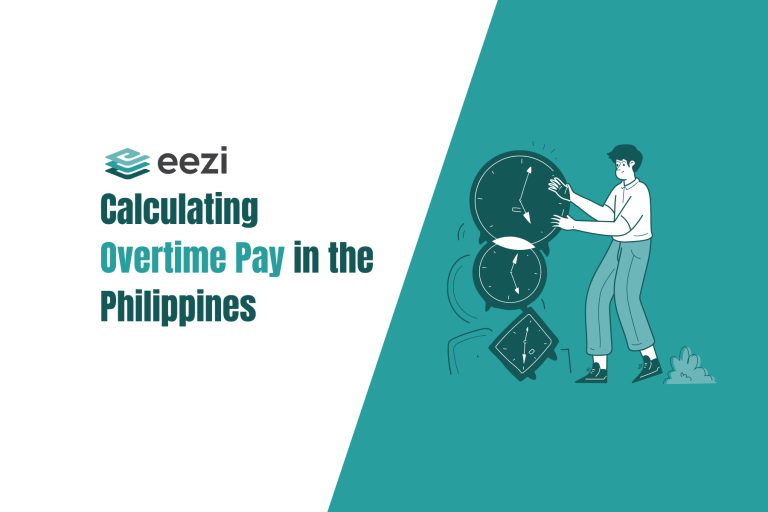What are the 2025 TIN ID requirements for employment?
One of the most essential prerequisites for starting your first job in the Philippines is obtaining a Tax Identification Number (TIN). The Bureau of Internal Revenue Tax (BIR) issues this identification, which is utilized for tax purposes, payroll processing, and labor compliance. Employers require it to ensure that their staff are registered with the tax authority
If you’re a first-time job seeker or switching employers, understanding the TIN ID requirements for employment might help you navigate the process smoothly. This guide will cover everything you need to know about TIN ID requirements for employment, from eligibility and application procedures to resolving common problems.
What Is a TIN ID?
A Tax Identification Number (TIN) ID is a unique and permanent number that is a necessary government-issued document for tax purposes in the Philippines. It is issued by the Bureau of Internal Revenue (BIR) and acts as an identification that a taxpayer has registered.
The TIN is similar to an SSS, a PhilHealth, and a Pag-IBIG number in that each is required for all transactions with the government agency. This number is also required for other LTO transactions, including permit applications, voter registration, financial institution registration, and car registration.
Moreover, employees must have a TIN ID for tax deductions, income processing, and labor law compliance. Employers often ask for a TIN ID upon recruiting to ensure precise tax documentation.
Who Needs to Get a TIN?
Anyone who earns money in the Philippines, whether a Filipino citizen or a foreign national, is obligated to pay taxes to the government and must register with the BIR to obtain a TIN.
Non-taxpayers may be obliged to get a taxpayer identification number in certain circumstances under Executive Order (EO) 98. This occurs when people deal with the government to get licenses, permits, or other official documents, or with financial institutions like banks for opening checking, savings, or investment accounts.
These people or groups should apply for a TIN with the BIR if they have never been issued one before:
First-Time Job Seekers
New workers who have never worked before must obtain a TIN ID as part of their job requirements.
Employees Changing Jobs
To avoid duplicate registrations, employees who transfer to a new company must present their existing TIN to the new employer.
Freelancers and Self-Employed Individuals
Business owners, freelancers, and independent contractors must also have a TIN ID to comply with tax laws and register their businesses.
TIN ID Requirements for First-Time Applicants
If you are applying for a TIN ID for the first time, you need the following documents:
- BIR Form 1902 (for employed individuals) or BIR Form 1901 (for freelancers and self-employed)
- A valid government ID (driver’s license, passport, or birth certificate)
- A Certificate of Employment or COE (for employees)
- A copy of your birth certificate (PSA-issued)
- Other requirements for self-employed individuals include a business permit and DTI/SEC registration.
Where to Apply for a TIN ID
You may submit an application for a TIN ID at the BIR Revenue District Office (RDO) closest to your employer or your place of business (if you are self-employed).
Step-by-Step Application Process
- Fill out the BIR form according to your employment type.
- Submit the necessary documentation to your authorized RDO.
- Wait for BIR verification and processing.
- Once your application has been approved, you will receive your TIN ID.
There are several ways to apply for a taxpayer identification number (TIN). Employees should complete BIR Form 1902 and submit it to their employer, along with the other TIN number requirements.
Moreover, the employer will complete the necessary sections of BIR Form 1902 and submit your TIN application to the RDO, where the employer’s business is registered. Many employers now use the BIR’s Online Registration and Update System (ORUS) to do this faster and more conveniently.
How Employers Register Employees via ORUS
Under Revenue Memorandum Circular (RMC) No. 54-2024, the BIR now strongly encourages employers to use the Online Registration and Update System (ORUS) for registering employees easily and hassle-free.
Here’s how it works:
- The employer creates and maintains an ORUS account.
After creating an ORUS account, here’s how to complete the employee’s TIN registration:
- Log in to ORUS. Visit https://orus.bir.gov.ph and log in with your email and password.
- Start a new registration. Click New Registration in the dashboard and select Individual as the user type.
- Fill out forms. Complete taxpayer info, residence address, purpose of application, authorized representative details (if any), and spouse information (if married).
- Attach documents. Upload all required files (JPEG, PNG, or PDF, max 25MB).
- Review and submit. Check the summary, confirm everything is correct, and submit the application.
- Wait for approval. You’ll get an Application Reference Number (ARN) and an email once approved.
- View the TIN online. After approval, the taxpayer can log in to ORUS, go to Profile, and see the TIN, Registered Name, Branch Code, and RDO Code at the top left of the page.
How to Get a TIN ID if You Already Have a TIN Number
If you already have a TIN but don’t have a physical TIN ID, you can get one by going to the BIR or revenue district office.
Requirements for Damaged or Lost TIN ID
- A valid government ID
- Affidavit of Loss (For Lost TIN IDs)
- Completed BIR Form 1905 for replacement requests.
If you have changed employment or business data, you must update your TIN information by sending BIR Form 1905 to your RDO.
Substituted Filing: What Happens After You Get a TIN?
Once you’ve secured your TIN and are formally employed, you might wonder about your responsibilities when it comes to filing taxes. Fortunately, many employees in the Philippines are covered under what’s called substituted filing.
What Is Substituted Filing?
Substituted filing means your employer handles the filing of your income tax return on your behalf. Instead of filing your own return, the BIR Form 2316 issued and filed by your employer serves as your official annual income tax return.
Who Qualifies for Substituted Filing?
To qualify, you must meet all of the following:
- You receive purely compensation income (no freelance or side business earnings).
- You work for only one employer during the taxable year.
- The correct amount of tax is withheld by your employer.
- If married, your spouse must also meet the same conditions.
If you meet these criteria, you do not need to file an annual ITR yourself — your employer takes care of it.
When Does Substituted Filing Not Apply?
You will need to file your own Annual Income Tax Return (ITR) if:
- You had more than one employer during the year.
- You had freelance income, side gigs, or a small business.
- Your taxes were not fully withheld.
- You’re a non-resident alien engaged in trade or business in the Philippines.
This is important for employees to understand, especially if you’re considering taking freelance work on the side or switching jobs within the year.
FAQs
- How many digits do a TIN have?
A TIN card has nine digits plus a three-digit branch code (applied to business taxpayers), for a total of twelve digits. Individual TINs are assigned the branch code 000 at the end of the TIN.
- How do I get a TIN through online registration?
Currently, only corporations can use the BIR eReg registration system to produce TINs for employees. As a result, you can only obtain your number manually at the BIR RDO.
- Should I get a new TIN if I start a business or a new job?
No. Your TIN is your permanent identification number, so you must use it for the rest of your life. It is against the law for anyone to have numerous TIN numbers.
When creating a sole proprietorship business, you must register it with the BIR by completing BIR Form 1901 and entering your current personal TIN. There is no need to apply for a new TIN for your company.
It is important to note that your revenue district office (RDO) should now be based on where you reside rather than your employer’s address. If you change jobs, you must update your BIR TIN registration and seek a transfer from your prior employer’s RDO to your place of residence.
- What number should I call for TIN-related problems and inquiries?
If you have any questions for TIN or tax-related transactions, please visit the revenue district office (RDO) OR call the BIR helpline at 8538-3200. Alternatively, you can email contact_us@bir.gov.ph.
Related: BIR Tax Mapping: How to Keep Your Business Compliant?
Take Away
A TIN ID is a crucial requirement for employment in the Philippines. Whether you’re a first-time job seeker, a freelancer, or switching jobs, having a TIN ID ensures compliance with tax regulations. By preparing the required documents and following the application or registration process, you can secure your TIN ID smoothly and start your employment hassle-free.
Handling employee TINs manually?
Switch to eezi and automate TIN verification, tax computation, and monthly remittances in one go. Book a demo now!


